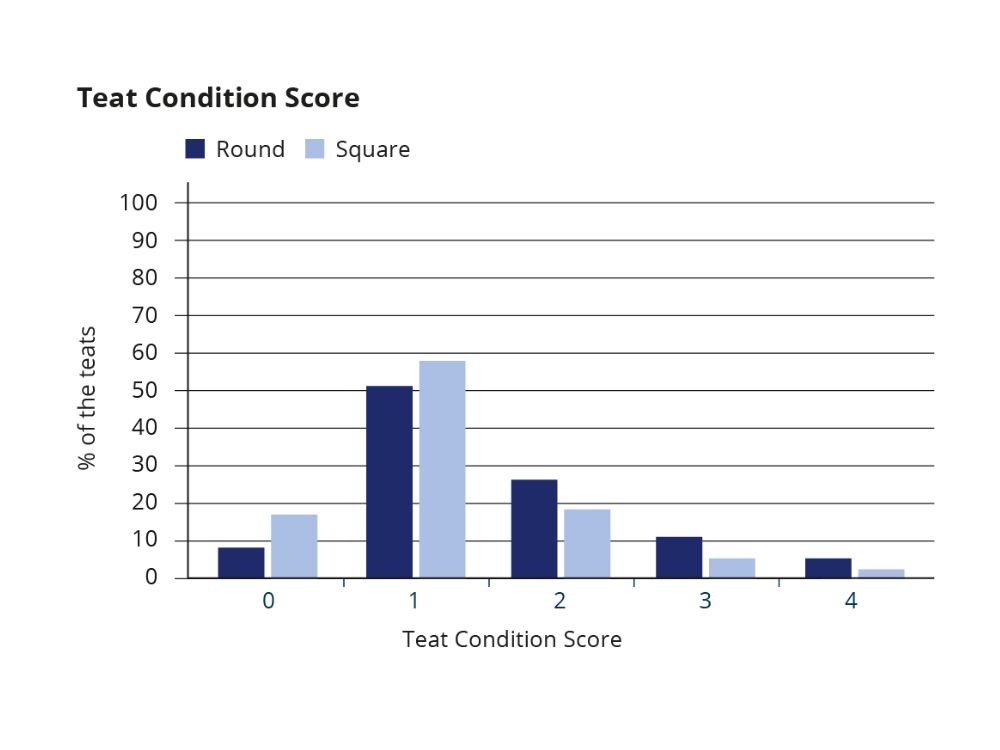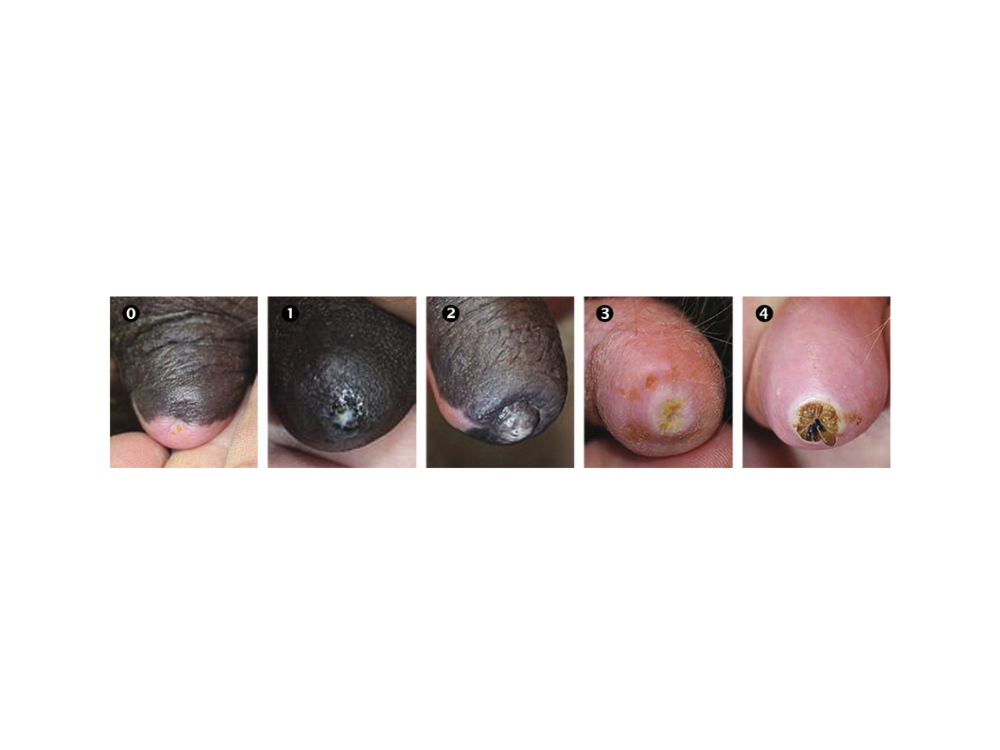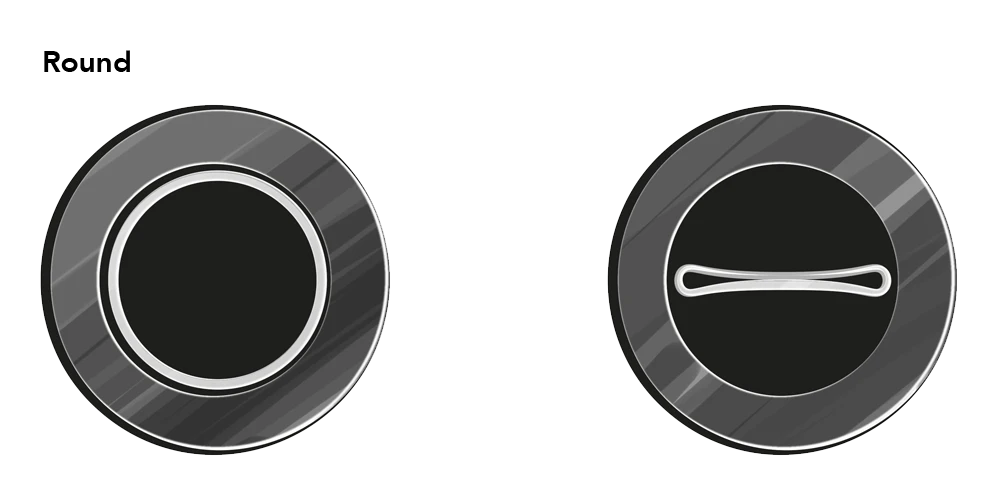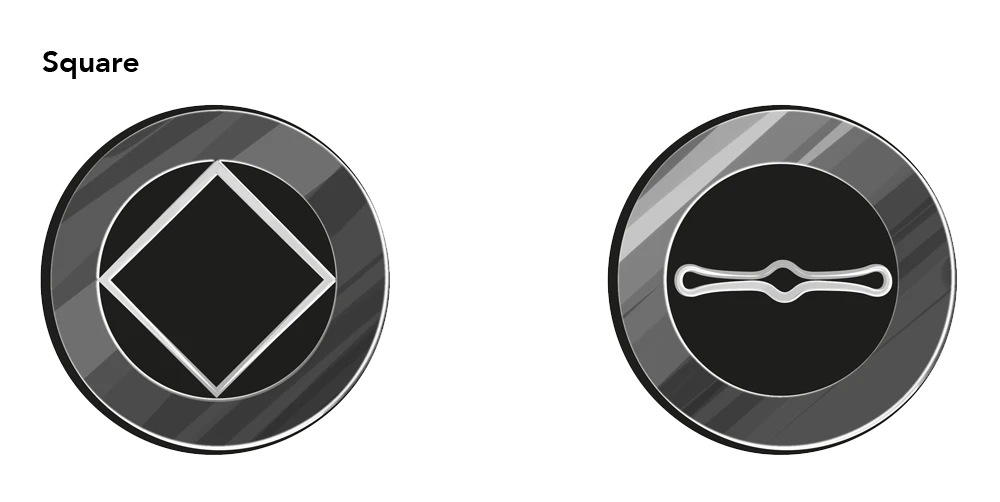Better teat condition with square teat liners
Cornell University investigated the effect of liner type on teat condition. The study compared round and square liner types in terms of teat end deformation and tear. The results show that milking with square ProSquare liners is significantly less stressful for the teat and leads to healthier teat ends.
The study was conducted on 12 dairy farms and consisted of two phases. In the first phase, half of the cows were milked with square ProSquare liners and the other half with round liners. This showed that milking with round liners caused more teat end deformation than milking with square ProSquare liners (see graph and Figure 1).


Graph 1: Teat condition score study Cornell University. Teat condition scored from 0 to 4, see figure 1.
Figure 1: Scale of the teat condition score
In the second phase, liner types were switched. The cows that were milked with round teat liners in phase 1 were now milked with ProSquare teat liners. The group that were milked with ProSquare teat liners in phase 1 were given round liners in phase 2. As a control, two farms remained unchanged. This resulted in the following conclusions:
- Cows milked with ProSquare teat liners had 20% fewer teat crackings.
- Teat ends milked with ProSquare scored 0.5 points lower on callus formation (scale 0-4).
- Within 3 months, cows switching to square liners showed clear improvement in teat condition.
Why are square teat liners less stressful for the teat?
Because the walls of the square teat liner massages the teat on four sides, the stress on the teat is less than with a round teat liner, where two sides of the teat are massaged. The use of square teat liners improves blood circulationin the teat and the teat sphincter.
Benefits of square liners:
- Improved blood flow
- Less teat end callus formation
- Smoother, healthier teat ends
- Better teat closure after milking
Healthy teat sphincters are crucial for keeping udders healthy. Callused teat ends are ideal for environmental bacteria to nestle in. In addition, teat ends with a callus ring stay open longer, which too allows bacteria to enter more easily.
Dutch dairy farms have been testing ProSquare teat liners as well. These too showed a clear improvement in teat condition (see table 1).
| Front left | Front right | Rear left | Rightholder | Average | |
| 0 weeks (start) | 2,42 | 2,32 | 2,29 | 2,17 | 2,30 |
| 10 weeks | 1,89 | 1,88 | 1,53 | 1,62 | 1,73 |
| 30 weeks | 1,79 | 1,72 | 1,50 | 1,52 | 1,63 |


Improve milking efficiency
ProSquare rubber square liners are suitable for both conventional and AMS (Automatic Milking System) setups. After installing the ProSquare liners and adjusting the settings if necessary, we quickly see clear differences in practice.
Not only in teat condition, but certainly in a more efficient milking process as well. Depending on the initial situation, milking speed can increase by 0,1 kg to 0,4 kg per minute. By lowering box time, cows can be milked more often, improving both udder health and overall yield. The robot’s increased free time allows for milking more cows, maximizing capacity and productivity.
The ProSquare liners can be placed in Lely, SAC and Boumatic milking robots. Following installation, some farms may notice a brief adjustment phase, after which milking speed and efficiency consistently increase.
